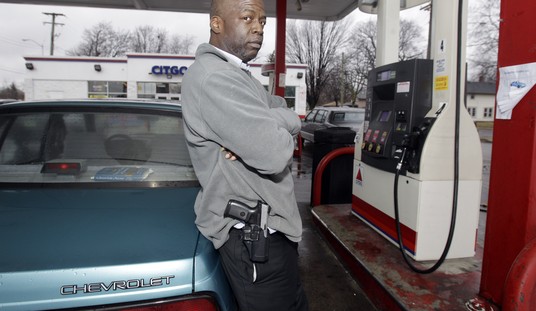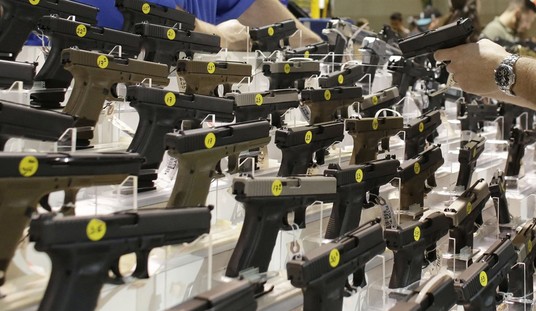[Slideshow of Knouf’s photo at the end of the article.]
Eleven years ago, a young Army combat cameraman assigned to the Military District of Washington was one of the military photographers who documented the Sept. 11 attack on the Pentagon.
It was a normal day, said Army Sgt. Tony Knouf, who is now a broadcast journalist with the Army Reserve in Colorado. Knouf has since deployed to Iraq and Afghanistan as a public affairs non-comissioned officer.
Somebody came into the Third Infantry Regiment “Old Guard” public affairs office, where Knouf was stationed at Fort Meyer, Va., and told everyone there that a plane crashed into one of the World Trade Center towers, he said.
“We were all around just saying, what an idiot,” he said.
“We were all saying: ‘Who could not miss the World Trade Center towers?’” he said.
“When the second plane hit, we knew right away that something was up,” he said.
One of the jobs of an Army public affairs office is to record news stories for the archives and for briefings, the PAO VCR was not working, so Knouf, volunteered to run back to his barracks room and grab his own, he said.
It was there outside in the parking lot going to back to the barracks, when he saw the black smoke rising from the Pentagon, he said. “It must have just happened, because it wasn’t on the news yet.”
The Pentagon was about a mile-and-a-half away, he said.
Instead of going for the VCR, Knouf ran back to the office, grabbed his camera kit, a Nikon D1 with a set of lens, and told them he was going straight to the Pentagon, he said.
There were two gates getting off Fort Myer, both the gate leading to Naval Annex and Henderson Hall and the one by the Iwo Jima memorial, which is the civilian entrance to Arlington National Cemetery, were locked down, he said. “They were not letting anyone drive off post, but you could walk, so I walked through Marine compound at Henderson Hall, and crossed Route 395, to get to the Pentagon grounds.”
Before walking to the Pentagon, Knouf checked in again with his office, he said.
“They told me I couldn’t go to the Pentagon, because I was needed to answer phones,”
Knouf said he answered phones for about an hour until his supervisor left the office, then he took off.
When he got to the Pentagon, there were only one or two fire trucks on the scene, he said. “There was nobody out in front of the Pentagon, just a few firefighters, and then not long after that helicopters started landing for Medevacs.” This was all 90 minutes after the crash.
There were firefighters on the roof dousing the fire by impact site, he said.
“All the debris was all out there,” he said. “All little scattered pieces, no large pieces, no wings, no engines or anything like that.”
The airliner, American Airlines Flight 77, crashed into the side of the Pentagon that had just been reinforced with steel beams, he said. “I had been going in and out of the Pentagon for the last couple years and it had always been under reconstruction. I remember how happy I was to have them finally done with the construction, so you could walk through that side of the building without all the hassle.”
The damage would have been so much worse if they had hit another other side of the building, he said.
The Soldiers of the “Old Guard” are the most serene of the ceremonial units in the entire inventory. They stand guard at the Tomb of the Unknowns, as well as participate in military funerals and other ceremonies at Fort Myer and Arlington National Cemetery.
Some call the “Old Guard,” either with affection or mocking “toy soldiers,” but the truth is that units of the Old Guard have deployed to Iraq and on in the days after the Sept. 11 Attacks, they because the ready manpower pool for the survivor rescue and remains recovery mission.
“People from my unit were suiting up to check for survivors and pick up debris,” he said. “The ‘Old Guard’ guys are the ones who went in and collected body parts and evidence.”
The ‘Old Guard’ Soldiers brought with them wooden posts that they used to prop up parts of the building where they were searching because the building was so unstable, he said.
“As far as I know, they didn’t find any survivors,” he said.
Many of the Soldiers were from Bravo Company, which does funeral honors at Arlington, he said. “I know that some of the guys, who were their helping to collect remains, also helped with the funerals and buried the very remains that they had recovered.”
Knouf went inside the bowels of the Pentagon himself with his regimental command sergeant major, he said. “It smelled to me like an electrical fire, the floors had already been sealed off, and we couldn’t get down the stairs to the down into the impact site. We did go into the courtyard, the grassy area inside the Pentagon, and they had all these bodies bags laid out, hundreds of body bags, expecting they to be filled up with remains, and as far as I heard or saw, they never filled any significant remains to put in those body bags.”
There was a gym at Henderson Hall set up as a makeshift hospital with doctors, nurse and equipment, as well, he said. “Not a single person showed up.”
Soon the whole site was declared a crime scene, he said.
“I am not sure what time the FBI shows up, but when they did, first they set up a yellow “Do Not Cross” tape around the grassy area by the crash site, then small a plastic fence and eventually, a steel chain link fence,” he said.
“Then, they started issuing ID’s,” he said.
“One the first day, I was walking around freely,” he said.
“When the FBI showed up, they said: ‘Look, this is all evidence, you can’t be taking pictures here,” he said.
“I said: ‘Hey, I’m combat camera, this is my boss’ offices,’ They said: ‘You can’t be taking pictures here unless you turn them into us as evidence, otherwise you cannot go this close to the impact zone,’” he said.
When Knouf protested through his chain of command, he was rebuffed, he said. “The chief of DoD public affairs backed up the FBI: ‘We no longer have jurisdiction over our own reservation. You cannot release any photos without going through the FBI first.’”
Knouf ended up sitting on hundreds of photos for the next 30 days until the FBI and the DoD decided they could be released, he said.
“But, because many of them were close-ups, the Army really didn’t push them out there,” he said.
“Of course, the Old Guard held on to them, and years later somebody published them,” he said.
“A few years ago, my photos started popping up on a conspiracy website,” he said.
“They said somebody told them, after I was long gone, that a guy gave them the photos and that they were from the Old Guard, but the guy who gave them the photos refused to identify himself, but he said that he was the one who took the photos,” he said.
“I was, like, no, actually…” he said.
“It was not me who gave them the photos, they are not secret photos, they have all been released, and I am the one who took them,” he said.
On the second day, Knouf attended a secret briefing, where Secretary of Defense Donald H. Rumsfeld spoke, he said. “Nobody mentioned Al Qaeda, but they were definitely going after somebody.”
Day Two there was the mood was about kicking somebody’s ass, he said.
That same day, President George W. Bush showed up, and a bunch of Soldiers draped the flag from the building, he said. “I went with them to get the large flag from Fort McNair, because there was no large flag available at the Pentagon.”
As the president and the defense chief walked around surveying the damage they were constantly yelling to each other and pointing, he said. “I couldn’t hear because they were so far away.”
Also by the second day, the FBI used the “Old Guard” to literally sift through and bag evidence as area the FBI set up away from the impact side on the river side of the building, he said.
The Pentagon was Knouf’s workplace for the first 30 days after the crash, and then it was time to return to a more normal routine, he said. “It was time to start answering the phones again.”
Six months later, the FBI concluded its crime site management of the Pentagon and there was a small ceremony, he said.
Eleven years later, Knouf remembers the quiet.
“There was not a lot of talking, everyone was focused on what they were doing and nobody really talked,” he said.








Join the conversation as a VIP Member